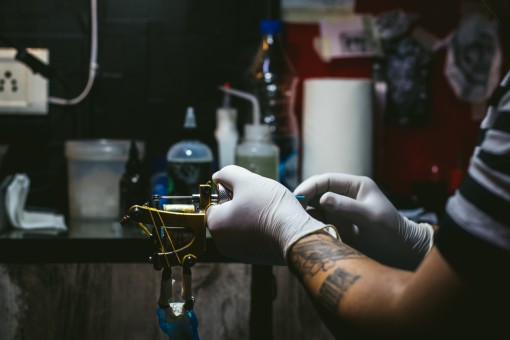
Using an app or pin prick to keep tabs on your health was last decade’s medical innovation at work.
But now, researchers from Germany have come up with another solution for real-time health tracking. This one comes in style—as a permanent tattoo with the ability to change colors in response to bodily changes called biomarkers.
Their findings were published in the journal Angewandte Chemie International Edition (1).
The tattoos detect changes in biomarkers such as glucose, pH and albumin in the body. These markers could let patients and doctors track diabetes or quickly diagnose liver or kidney failure, a game-changer for those dealing with chronic conditions.
To use these tattoos, researchers injected dye into pig’s skin in a similar fashion as applying a traditional tattoo.
However, the dye included sensors to change colors in the presence of the biomarker being measured.
For example, the pH sensor detected a pH range from 5 to 9 and was represented on the color spectrum from yellow to blue. The color changed across this range based on how acidic or alkaline the skin was at the time.
More accurately, the color changed to reflect levels in the interstitial fluid, which surrounds cells in the body. Tattoo artists commonly inject dye at this level as well.
Next, researchers assessed whether their team could use smartphone photos of the tattoos to estimate levels and identify potential problems. They found that these medical professionals were able to do so accurately.
However, the main problem is that researchers couldn’t reverse the tattoo’s color after it changed, except for the pH sensor. The research also needs additional study on live animals and then human subjects before it goes live.
Equally important, researchers need more information on the sensor’s toxicity or side effects over time. And unfortunately, that process of researching and ruling out potential harms could take several years.
In the long run, these researchers think the tattoos could measure electrolytes, proteins and even a person’s level of dehydration.
In 2017, a team of MIT and Harvard researchers reached a similar level of testing for biosensing tattoos.
Afterward, one challenge proposed in a Science Alert report was that these tattoos need a high level of accuracy (2).
If reached, the technology could replace blood tests and other monitoring technology which, while not invasive, aren’t exactly pleasant on a routine basis.
Learn how to find melanoma here.
References:
- Yetisen, A. K., Moreddu, R., Seifi, S., Jiang, N., Vega, K., Dong, X., Dong, J., Butt, H., Jakobi, M., Elsner, M., & Koch, A. W. (2019). Dermal Tattoo Biosensors for Colorimetric Metabolite Detection. Angewandte Chemie International Edition, 58, 10506–10513. doi: 10.1002/anie.201904416.
